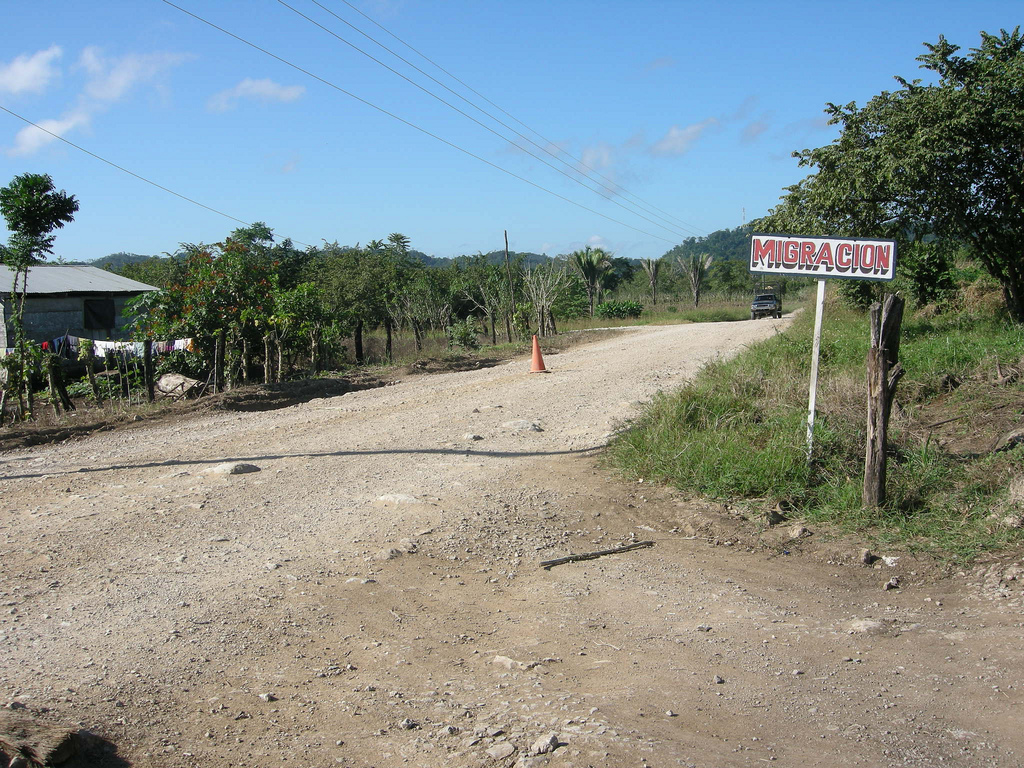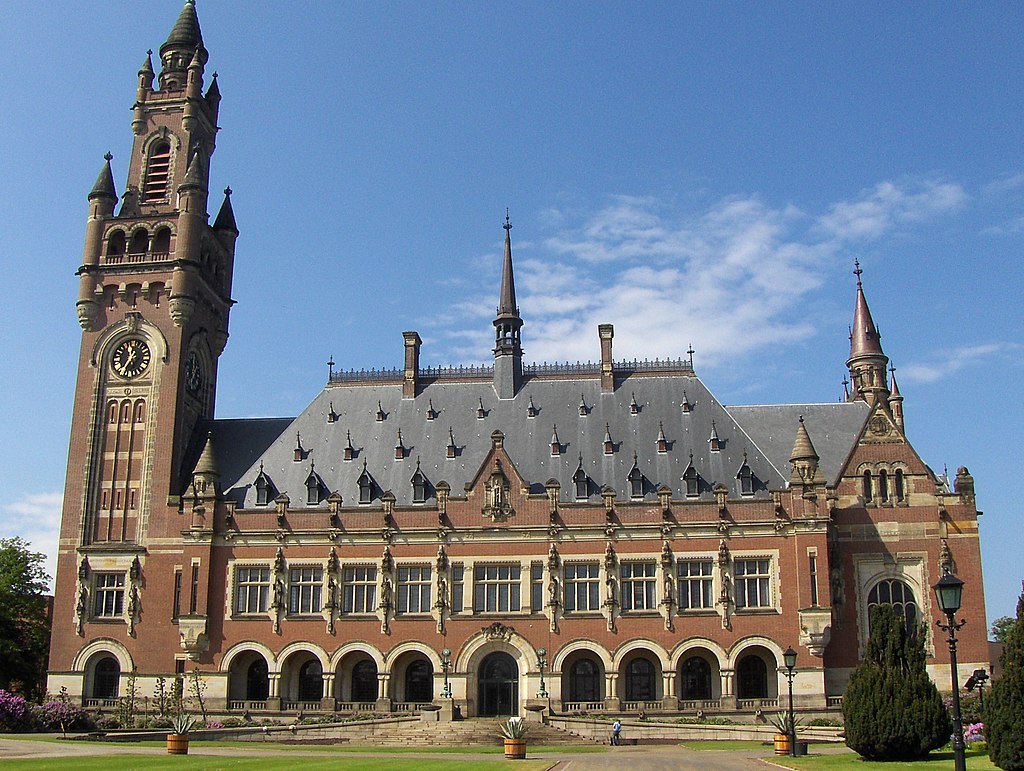Published by The Lawfare Institute
in Cooperation With

Editor's note: A version of this piece is now available in Spanish here.
Nota editorial: Se puede leer este post en español aquí.
On Feb. 15, President Trump announced a national emergency to build a border wall—claiming an “invasion of people” at the southern border and noting that “we have far more people trying to get into our country today than probably we have ever had before.” While U.S. Customs and Border Protection (CBP) data debunk these specific claims, the focus on statistics and the increasing number of Central American families arriving at the border over the past year inspired us to dig more into the data. In this post we set out to answer a more fundamental but elusive question: How many people are leaving Central America for the United States without appropriate migration documents?
The question may seem simple, but it is surprisingly tricky to answer. In fact, the range of answers varies by the hundreds of thousands. In 2016, the Migration Policy Institute suggested the true number of Central Americans migrating through Mexico without migratory documents was around 300,000, while the United Nations High Commissioner for Refugees reported it at 400,000 and Doctors without Borders suggested it was as high as 500,000. Meanwhile, in the past few weeks, Mexico’s Secretary of the Interior Olga Sánchez Cordero noted that the numbers of migrants entering Mexico could soon reach 700,000, and both Trump and Secretary of Homeland Security Kirstjen Nielsen suggested that this fiscal year could see 900,000 to 1 million migrants, including Mexicans, arriving at the U.S.-Mexico border.
Figuring out which of these numbers is accurate isn’t just a question of access to data. Even if we had all of CBP’s data—and the two of us don’t have much more than what is public—we’d still have to make a series of assumptions. In particular, performing this calculation requires estimating two numbers: 1) how many Central Americans cross into the United States and are never detected and 2) how many Central Americans leave their homes but never make it to the U.S.-Mexico border.
To answer these questions and others, we created a model that provides our best estimates for how many people have left Honduras, El Salvador and Guatemala. We’ll be walking through it in the following paragraphs, but you can also tweak our assumptions and get your own numbers.
To begin answering the question of how many people are leaving Central America each year, we started with data from the United States—most Central American migrants’ final destination—and worked backward. CBP keeps data on the number of apprehensions along the U.S.-Mexico border and includes the numbers by nationality. Using these CBP data, we first separated out the total numbers into three categories of travelers: families, unaccompanied minors and adults. However, the available data create limitations, since CBP did not start publishing data for minors and families until 2008 and 2012, respectively. Similarly, CBP doesn’t separate out numbers for adults traveling alone, meaning that we had to subtract the other groups from the total apprehensions to get this number.
It is important to break out these categories because the groups do not act the same way once they reach the U.S. border. Families and unaccompanied minors generally seek out—rather than evade—U.S. Border Patrol agents. This is largely because U.S. laws and policies treat asylum-seeking Central American families and unaccompanied minors differently from single adults, and travelers belonging to the former two groups are often released after several weeks to begin their legal cases outside of detention. (Frequently, they are fitted with ankle monitors for tracking.) For the purpose of this model, this means that CBP’s tallies of apprehended families and unaccompanied minors likely mirror the true numbers of people in those groups arriving at the U.S.-Mexico border.
Central American adults traveling alone, however, do not follow this same pattern. Unlike families or unaccompanied minors, adults are frequently held in detention for months or for the duration of their asylum proceedings. A number of Central American adults attempt to evade the Border Patrol, given that they do not want to remain in detention as they wait out their asylum cases or because they are seeking employment opportunities and not asylum. This means that while many Central American adults are apprehended—and therefore show up in CBP numbers—some percentage of Central American adults entering the United States undetected are left out of the data.
To estimate these non-detected adults, we used CBP’s modeled success rate—that is, how successful the Border Patrol is in apprehending people attempting to cross the border illegally. CBP has various methodologies for measuring apprehension rates (you can read about them here). We chose to use the model-based apprehension rate, which is based on a statistical model. Using this methodology, we found that CBP’s apprehension rate was 34.1 percent in 2003, meaning that an estimated 65.9 percent of border crossers entered undetected. Since then, the apprehension rate has increased steadily to reach 64.8 percent in 2016, with an estimated 35.2 percent of migrants evading the Border Patrol.
For 2017, taking all these categories together—apprehended adults, families and unaccompanied minors, and adults who successfully evade the Border Patrol—we found that the estimated number of Central Americans crossing into the United States between ports of entry was 195,194.
Yet there is a wrinkle: Apprehensions do not represent unique individuals. If the Border Patrol apprehends a group of people, the CBP data will count everyone in the group. But if the same person is apprehended two times in a year, then that person is counted as two apprehensions. To remove repeat crossers from the database, we used an estimated recidivism rate of 3 percent for Central American adults traveling without children (both apprehended and not detected). This is lower than CBP’s overall recidivism estimate of 10 percent for 2017, since that estimate is heavily influenced by Mexican-national repeats who have less geographic distance to traverse again. Given the added difficulties for Central Americans, we chose a rate that was one-third of CBP’s overall recidivism rate.
By taking our first number of 195,194 apprehensions and subtracting the 3 percent of repeat crossers, we now have a rough estimate of the total number of Central American families, unaccompanied minors and single adults who crossed between ports of entry along the U.S. southern border.
However, some Central Americans, whom CBP labels as “inadmissables,” go directly to ports of entry to seek asylum rather than crossing the border. There are some limitations to estimating this population, since CBP does not publish data on adult inadmissibles or total inadmissibles by nationality. To compensate, we used CBP’s available data on Central American families and unaccompanied children seeking asylum at ports of entry. Then we estimated that adults without children make up 25 percent of the total Central American population entering the United States as inadmissibles. This estimate comes from reviewing available CBP inadmissible data and fieldwork along the U.S.-Mexico border, but it should be viewed as a rough estimate. By our calculations, 40,572 Central Americans sought asylum at ports of entry in fiscal 2018.
Estimated Number of Central Americans Arriving in the United States
Now we have a sense of how many Central Americans without migratory documents are arriving at the United States’ southern border every year, but we are still missing the migrants who never make it through Mexico or don’t attempt to cross the U.S. border. To tackle this final question, we used data from Mexico’s National Institute of Migration (INM) and Mexico’s Commission for Refugee Assistance (COMAR).
Since January 2014, the INM has apprehended and deported over 600,000 Central American migrants as they crossed through Mexico. Most of these deported migrants will immediately re-enter Mexico and eventually reach the United States. However, others will remain in Central America or settle on Mexico as their final destination. To estimate how many never make it to the United States, we separated the INM deportation numbers into categories of families, unaccompanied children and adults. Based on our own previous fieldwork across Mexico, we estimate that 20 percent of deported families and unaccompanied children and 10 percent of deported adults never cross the U.S.-Mexico border. These estimates are based on Mexican laws, migrant smuggling practices and anecdotes, although additional analysis could help make them more precise.
Some Central Americans may also receive refugee status in Mexico. From 2013 to 2018, according to COMAR, 8,652 Central Americans received refugee status or complementary protection in Mexico. (Complementary protection is offered to individuals who do not qualify for refugee status but could be at risk if returned to their country of origin.) However, a small group of refugees and complementary protection status recipients eventually continue traveling to the United States, due to issues including security concerns, continued persecution, family reunification, or low wages. Based on interviews, we estimated that these individuals make up around 5 percent of the refugee population, and are ultimately reflected in CBP numbers.
Estimated Number of Central Americans Crossing Through Mexico
Taking all these inputs into account, the model shows that the number of Central Americans leaving the region first peaked in 2014 before hovering around 250,000 to 300,000 people each year until 2018 (closest to the Migration Policy Institute’s estimates). Yet over the past five months, from October 2018 to February 2019, the number of Central Americans leaving their homes has increased dramatically, with February 2019 border apprehensions reaching their highest level in more than 10 years. In fact, the numbers for the first five months of fiscal 2019 point to a doubling of migration numbers. Before the end of the fiscal year in September, it is possible that more than 700,000 Central Americans will leave the region (similar to Secretary Sánchez Cordero’s recent prediction).
This latest migration pattern is dominated by Guatemalans (49 percent), followed by Hondurans (35 percent) and Salvadorans (16 percent). However, when adjusting for each country’s population, we found that Honduras (with a population of 9.2 million) currently has the highest rate of outward migration with an estimated rate of 2,340 people per 100,000. Guatemala and El Salvador lag slightly behind with rates of 1,776 and 1,562 people per 100,000, respectively.
Migration by Country (Fiscal 2002-2019)
The data also highlight the shifting demographics among Central American migrants. In 2012, the first year for which CBP published data on both families and unaccompanied minors, Central Americans families and unaccompanied minors constituted 10 percent of total migration numbers. By 2019, families and unaccompanied minors reached closer to two-thirds of the total population leaving the region. The increase in families has been a focal point of the Trump administration’s migration policies, including family separations, family detention and the recent Migration Protection Protocols, which keep asylum seekers in Mexico during their U.S. asylum proceedings.
Migration by Category (Fiscal 2002-2019)
As with any model, the results are only as good as the data and the assumptions. Yet walking through these fundamental migration questions makes clear just how many components are involved in answering fundamental migration questions and the various areas in which we are only making educated guesses. The model and its results help to put the current national and regional discussions into context, highlighting longer term trends and breaks from the norm. But our hope is that the model can be tweaked, improved and edited to increase the precision of both migration numbers and the policies designed to address them.







